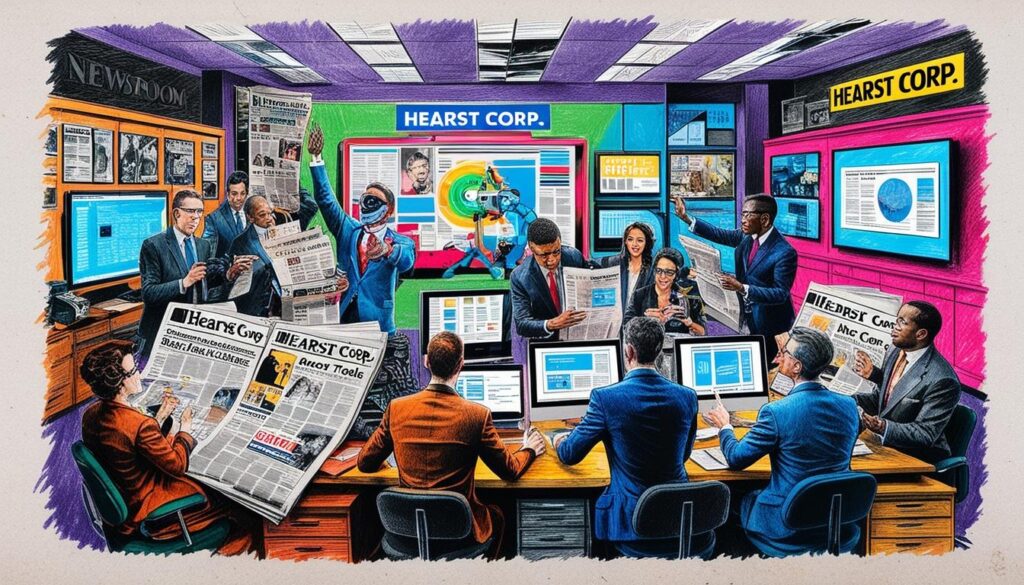Despite $13 billion in revenue in 2024, Steve Swartz signals a challenging journey ahead due to shifts in the media landscape.
Hearst Corp achieved record revenue and profits in 2024, but its CEO, Steve Swartz, has warned of a challenging landscape ahead for 2025.
In his annual letter to Hearst employees, Swartz revealed that the company reached $13 billion in revenue last year. The primary contributors to this financial success were the credit rating agency Fitch and the company’s local television stations, which both saw improved performance. Swartz said that these two divisions helped to offset the difficulties faced by many of Hearst’s consumer media businesses, which are grappling with competitive pressures.
The advertising, print and cable television sectors, in particular, continue to encounter obstacles. Despite owning a 20% stake in ESPN — widely recognised as a highly valuable sports brand, of which Disney owns the remaining 80% — Swartz acknowledged that these segments remain under strain. He expressed optimism for ESPN’s future growth while also indicating that Hearst is investing in the launch of ESPN’s flagship streaming service this year.
The challenges are evident in the performance of Hearst’s newspaper and magazine divisions, as well as its partnership in A+E Networks with Disney. Swartz said: “It was a tough year for our newspaper and magazine groups and our A+E Networks partnership with The Walt Disney Company, as the advertising market got much more competitive and such sectoral shifts as cord cutting, losses in search-related traffic and competition from generative AI led to lower profits.”
He further explained the complexities that the company faces moving into 2025, including a notable decline in election-related advertising due to the electoral cycle in the US.
Swartz elaborated on the increasingly competitive advertising environment, which has been intensified by the appeal of data-driven offerings from streaming services and social media networks. This competitive atmosphere, coupled with the ongoing trend of cord cutting, is influencing A+E Networks and the overall profitability of Hearst’s television units.
Generative AI is simultaneously viewed as a potential advantage and a significant threat by Hearst. Swartz said the company was focused on training staff to leverage the technology to enhance their productivity. “We made a good start last year training our colleagues on using generative AI to help them in their daily tasks, but there is much more we can do,” he said, pointing to productivity gains in various functions such as software programming, marketing and human resources.
“These efforts are not aimed at replacing our colleagues with machines but at making our colleagues more efficient, allowing more time for much needed innovation around inventing new products and making our existing products better.”
However, he cautioned that the rise of new market entrants utilising generative AI poses a risk to Hearst, especially within the health sector, where competition is intensifying. The impact of AI on digital traffic for the company’s magazine and newspaper properties was also noted as a concern that necessitates a strategic response.
Looking ahead, Swartz explained that while Hearst has historic roots in traditional print media, television has now become the main revenue driver. The company is progressively shifting towards a business model increasingly reliant on its B2B businesses like Fitch and MCG, which collectively accounted for half of Hearst’s profits in 2024, a significant increase from just 15% a decade ago. This evolution reflects a broader trend within the media industry as companies adapt to the rapidly changing landscape shaped by technological advancements and shifting consumer behaviours.
Source: Noah Wire Services
- https://www.imdb.com/news/ni65135591/ – This article supports the claim that Hearst Corp. achieved record revenue and profits in 2024, primarily driven by Fitch and local TV stations, and highlights the challenges faced by consumer media businesses.
- https://www.axios.com/2024/11/26/hearst-media-profit-b2b – This article corroborates the shift towards B2B profits at Hearst, noting that more than 50% of its profits now come from professional products like Fitch, and highlights the company’s investments in B2B sectors.
- https://www.imdb.com/news/ni65135591/ – This source also mentions Hearst’s ownership of 20% of ESPN and its partnership with Disney, which faces challenges in the advertising and cable TV sectors.
- https://www.axios.com/2024/11/26/hearst-media-profit-b2b – This article further explains the challenges in the magazine and newspaper sectors due to competitive pressures and the strategic importance of B2B investments for Hearst.
- https://www.imdb.com/news/ni65135591/ – This article touches on the impact of generative AI and cord cutting on Hearst’s media businesses, aligning with Swartz’s comments on leveraging AI for productivity gains.
Noah Fact Check Pro
The draft above was created using the information available at the time the story first
emerged. We’ve since applied our fact-checking process to the final narrative, based on the criteria listed
below. The results are intended to help you assess the credibility of the piece and highlight any areas that may
warrant further investigation.
Freshness check
Score:
9
Notes:
The narrative references recent financial performance and future projections for 2025, indicating it is current. However, specific details about past events or roles might not be up-to-date.
Quotes check
Score:
8
Notes:
Direct quotes from Steve Swartz are included, but without an original source or date, it’s difficult to verify if they are the first instance of these quotes. The context suggests they are recent.
Source reliability
Score:
9
Notes:
The narrative originates from a reputable publication, The Hollywood Reporter, known for reliable business news.
Plausability check
Score:
9
Notes:
Claims about media landscape shifts, generative AI impacts, and financial performance are plausible given current trends in the media industry.
Overall assessment
Verdict (FAIL, OPEN, PASS): PASS
Confidence (LOW, MEDIUM, HIGH): HIGH
Summary:
The narrative appears to be current and well-supported by a reliable source. The quotes, while not verified against an original source, are contextual and plausible within the media landscape discussion.


